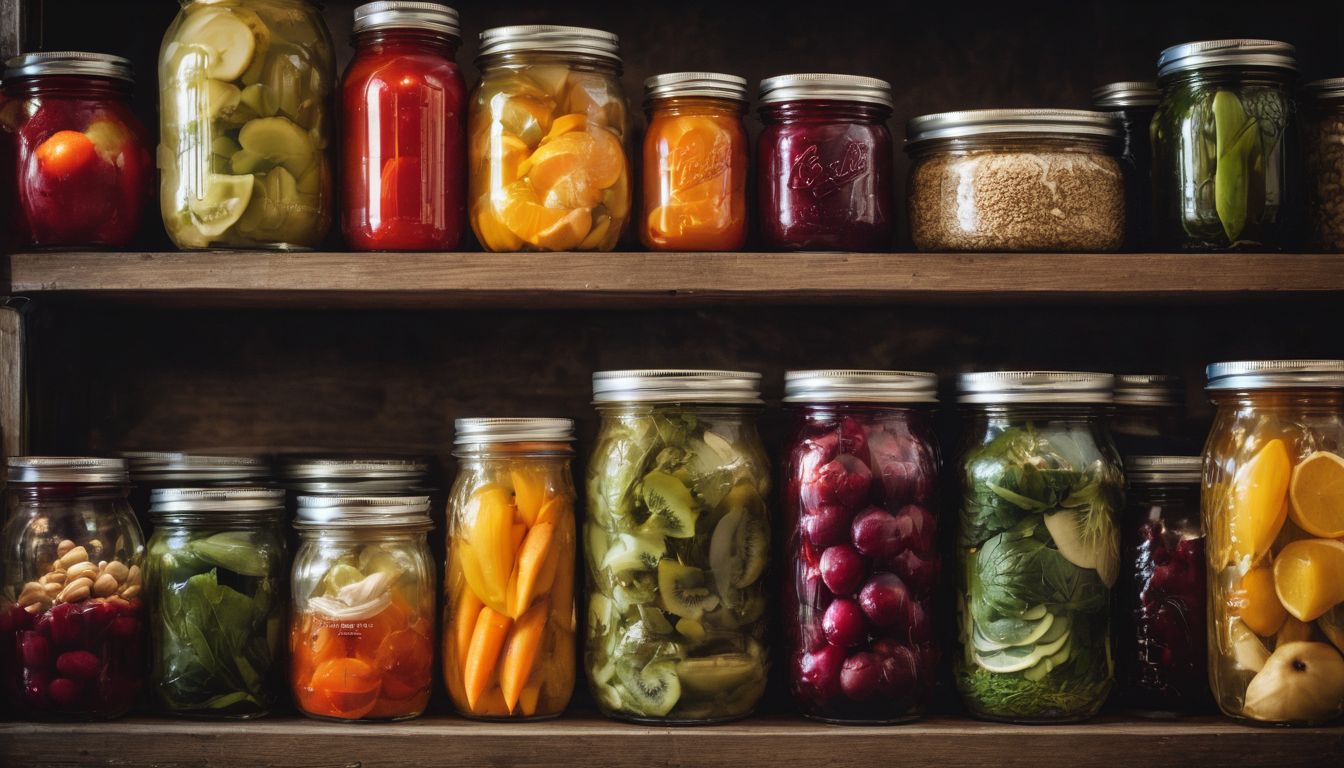Finding the freshest ingredients for your restaurant can be a real challenge. Did you know that locally sourced produce can often arrive on your plate within 24 hours of being picked? Our guide will show you how to tap into the power of local sourcing, boosting flavour and supporting your community.
Discover the secret to incredible dishes right here!
Key Takeaways
- Restaurants can enhance flavour and support the local economy by sourcing ingredients from nearby farms and producers.
- Freshness is key; locally sourced produce often reaches customers within 24 hours of harvest, ensuring maximum quality.
- Building relationships with local suppliers promotes sustainability and helps reduce the environmental impact of long-distance food transportation.
- Incorporating seasonal items into menus allows restaurants to use the freshest ingredients available and creates a unique dining experience.
- Promoting locally sourced ingredients in marketing attracts environmentally conscious diners and educates them on the importance of supporting local agriculture.
What are Locally Sourced Ingredients?
Locally sourced ingredients are produce, meat, and seafood that are obtained from local suppliers and farmers within a specific region. These ingredients are typically fresher, of higher quality, and have a lower environmental impact compared to those transported over long distances.
Definition and meaning of locally sourced
Locally sourced ingredients come from producers and farms within a certain distance from where they end up on your plate. They are intended to support economies near the restaurant, reduce environmental impact, and provide fresher fare for customers.
Often these might include farm-fresh vegetables, local meat and dairy products, or seasonal fruit that doesn’t have to travel thousands of miles to reach the table.
Choosing these locally grown goodies means restaurants can boast about offering quality food that supports community farmers and reduces carbon footprints. By incorporating such items into their menus, establishments create a unique dining experience that reflects the region’s flavors while contributing positively to local agriculture and conservation efforts.
This approach connects diners with their food sources in a meaningful way by ensuring they enjoy meals made with fresh, ethical ingredients straight from nearby fields and waters.
Benefits and importance of using them in restaurants
Using locally sourced ingredients in restaurants offers numerous benefits. Supporting local farmers and producers can reduce the carbon footprint by shortening supply chains, aligning with sustainable sourcing practices.
Incorporating local flavours into menus ensures freshness and quality, providing customers with a unique dining experience while promoting ethical sourcing. By prioritising locally produced meat and seafood, restaurants contribute to conservation efforts, creating a positive impact on the environment.
Moreover, utilising seasonal ingredients showcases a commitment to sustainability while building a consistent customer experience through local sourcing.
Incorporating locally sourced food not only supports environmental conservation but also creates economic opportunities within communities. By connecting with local suppliers and farmers, restaurants build relationships that foster community-supported agriculture (CSA).
Emphasising farm-fresh produce on menus highlights the story behind the ingredients, enriching the dining experience for environmentally conscious individuals seeking ethically sourced meals.
Sources of Locally Sourced Ingredients
Connecting with local suppliers and farmers is essential for obtaining fresh, high-quality ingredients. Building relationships in the community and visiting farmer’s markets can also provide a direct source of locally sourced food.
Connecting with local suppliers and farmers
To ensure fresh and high-quality ingredients for your restaurant while supporting local producers, consider the following methods:
- Establish personal relationships with local farmers and suppliers to create a direct link between your restaurant and their produce.
- Collaborate with community – supported agriculture (CSA) programmes to source a variety of locally grown fruits, vegetables, and herbs.
- Attend local farmers’ markets to meet and connect with different producers, enabling access to a wide range of seasonal ingredients.
- Emphasise the importance of sustainability by choosing suppliers who are committed to ethical farming practices and environmental conservation.
Building relationships in the community
Restaurants can build relationships in the community by connecting with local suppliers and farmers. This helps in sourcing fresh, high-quality ingredients while supporting the local economy.
Additionally, visiting farmer’s markets provides an opportunity to meet and network with local producers, fostering strong community ties.
By establishing partnerships with local suppliers and farmers, restaurants can ensure a constant supply of seasonal produce while reducing their carbon footprint by shortening the supply chain.
Visiting farmer’s markets
- Engage with local farmers and suppliers to learn about their farming practices and commitment to sustainability.
- Sample a variety of farm – fresh products and discuss how they can be incorporated into your restaurant’s menu for added diversity and flavour.
- Explore opportunities for establishing long – term partnerships with specific vendors who align with your values.
Incorporating Locally Sourced Food into Your Menu
When incorporating locally sourced food into your menu, it is important to set realistic goals and focus on seasonal menu items. Also, consider using sustainable seafood and supporting local farmers and suppliers.
Set realistic goals
- Assess the current menu and identify dishes that can easily incorporate local ingredients without compromising taste or quality.
- Determine a percentage of your total menu items that you aim to source locally, ensuring a balance between practicality and sustainability.
- Set specific targets for sourcing from local suppliers or farmers, emphasising on building long-term relationships within the community.
- Establish a timeline for gradually transitioning towards a predominantly locally sourced menu, considering seasonal availability and customer preferences.
- Monitor the progress of your efforts through feedback from customers and suppliers, allowing for adjustments as needed.
Seasonal menu items
Utilise seasonal fruits and vegetables in your dishes to ensure maximum freshness and flavour. Consider the following ideas for incorporating seasonal menu items utilising locally sourced ingredients:
- Create a rotating special that highlights produce in peak season.
- Craft salads and sides with locally grown greens, herbs, and root vegetables.
- Feature seasonal soups that showcase the best of local produce.
- Design desserts using fruits that are currently in season, such as berry tarts or apple crumbles.
Sustainable seafood
Restaurants can support sustainability by incorporating sustainably sourced seafood into their menus. Supporting sustainable seafood means choosing fish and shellfish that are caught or farmed in a way that minimises environmental impact.
This helps protect ocean ecosystems, ensures the longevity of fish populations, and promotes responsible fishing practices.
By prioritising sustainably sourced seafood, restaurants can contribute to the conservation of marine life while offering fresh and high-quality options to their customers. Highlighting these choices on menus can also educate diners about the importance of making environmentally conscious food choices.
Supporting local farmers and suppliers
When prioritising sustainable seafood, restaurants can also champion local farmers and suppliers. This involves establishing direct partnerships with nearby growers and producers to source fresh, high-quality ingredients.
By doing so, restaurants can cultivate a sense of community while reducing the environmental impact of long-distance ingredient transportation. Embracing farm-to-table practices not only ensures the use of seasonal produce but also supports conservation efforts and promotes sustainable farming methods.
Utilising locally produced meat and seafood from nearby farms or fisheries enhances menu offerings with wholesome choices that appeal to environmentally conscious diners. Building relationships with these local suppliers creates transparency in the sourcing process, allowing patrons to connect with the origins of their meal and reinforcing the commitment to supporting conservation and environmental sustainability.
How to Promote Locally Sourced Ingredients
Incorporate locally sourced ingredients into your marketing and branding to highlight the importance of supporting local farmers and suppliers. Share the story behind the ingredients on your menu to create a connection with customers and show your commitment to sustainability.
Incorporating them into your marketing and branding
When promoting locally sourced ingredients, it is important to incorporate them into your marketing and branding. This can be achieved by:
- Highlighting the use of local ingredients in your restaurant’s branding and advertising materials to attract environmentally conscious customers.
- Utilising social media platforms to showcase the story behind your locally sourced ingredients, highlighting their freshness and quality.
- Collaborating with local food events or organisations to further promote your commitment to using locally sourced ingredients.
- Creating partnerships with other businesses or organisations that share a similar focus on sustainability and conservation.
- Engaging with the local community through educational events or workshops to raise awareness about the benefits of supporting local farmers and suppliers.
- Developing a loyalty programme that rewards customers who support your restaurant’s commitment to using locally sourced ingredients.
Highlighting them on your menu
- Create a dedicated section on your menu specifically for locally sourced items, using keywords like “farm-to-table” or “locavore” to indicate their origin.
- Display the names and locations of the local farmers and suppliers next to each ingredient, giving credit where it’s due.
- Incorporate eye – catching visuals such as logos or images of the farms and producers alongside the menu items to emphasise their authenticity.
- Provide detailed descriptions of how the ingredients were sustainably produced, highlighting their freshness, quality, and minimal environmental impact.
Sharing the story behind the ingredients
Highlighting the journey of locally sourced ingredients can create a deeper connection with your customers. Showcasing the origin and story behind each ingredient on your menu resonates with environmentally conscious individuals, fostering an appreciation for sustainability and conservation efforts.
Engaging diners with tales of local farms, fishermen, or artisanal producers adds value to their dining experience, making them feel more connected to the food they are consuming. This transparent approach aligns with the values of the locavore movement, emphasising community-supported agriculture and shortening supply chains for restaurants.
Sharing these stories authentically communicates your commitment to utilising fresh, quality ingredients while supporting local farmers and suppliers.
Conclusion
In conclusion, incorporating locally sourced ingredients into your restaurant menu can benefit both the community and the environment. Consistently sourcing from local suppliers ensures freshness and quality in your dishes.
By supporting local farmers and suppliers, restaurants can promote sustainability and contribute to a healthier food system for all.
FAQs
1. Why should a restaurant use locally sourced ingredients?
Using locally sourced ingredients ensures freshness and quality, supports community agriculture, and often provides farm-fresh taste that customers love.
2. What are the benefits of using local food in restaurants?
Restaurants benefit from local food by showcasing seasonal farm-to-table dishes, reducing food miles for fresher produce, and building relationships with local producers.
3. Can all types of ingredients be sourced locally in restaurants?
While many restaurants aim to source meat, seafood, and vegetables locally, setting realistic goals is key because not all products might be available nearby throughout the year.
4. Are there downsides to sourcing food locally for my restaurant?
There can be cons such as limited variety during certain seasons or higher costs; however these challenges are balanced by immense pros like superior ingredient quality.





